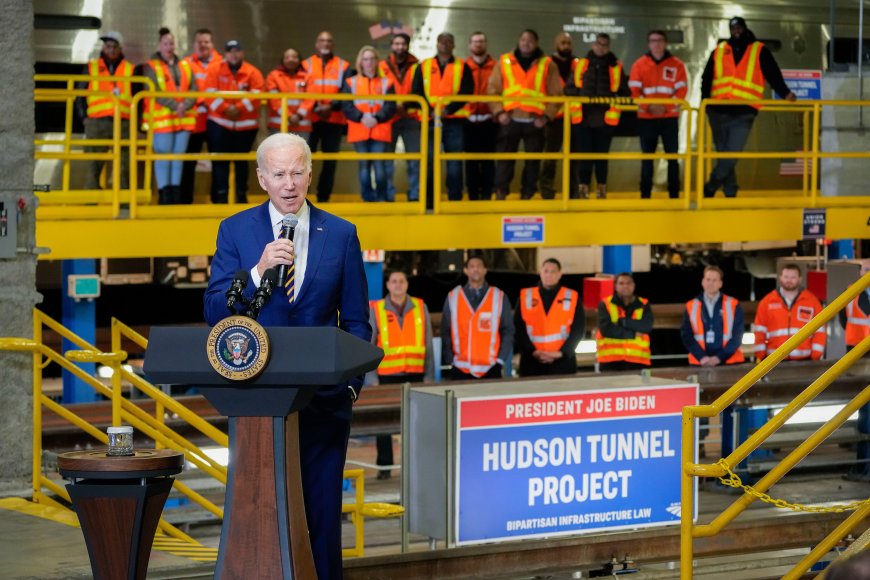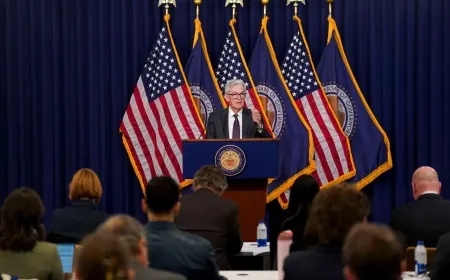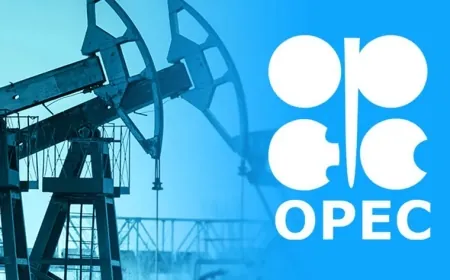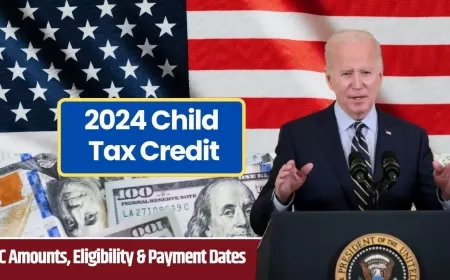Revitalizing America: Unleashing the Power of Biden's $1.2 Trillion Infrastructure Boost
Explore the transformative impact of President Biden's $1.2 trillion infrastructure legislation, revitalizing America's roads, bridges, water access, and internet connectivity.

In a groundbreaking move, President Biden sealed the deal on the US Infrastructure Investment and Jobs Act (IIJA) in November 2021, heralding a new era of transformation for states and federal agencies.
Since its enactment, this bipartisan legislation has injected an impressive $1.2 trillion in funding, empowering authorities to revamp roads and bridges, enhance access to clean water and high-speed internet, and accelerate the growth of clean energy projects across the nation.
Nevertheless, the utilization of these funds has been a mixed bag, with varying capacities exhibited by each state and local government. The allocation of funds was proportional to the number of infrastructure projects within each state.
States like California ($20 billion), Texas ($15 billion), and New York ($10.9 billion), boasting larger populations and expansive territories, secured the lion's share of the funding, while New Hampshire received the smallest amount at $855 million.
Joseph Schofer, an esteemed professor emeritus of civil and environmental engineering at Northwestern University, explained that the relative size of expenditure is influenced by the preparedness of state governments to act swiftly. He stated, "Those that were better organized — had their priorities lined up and projects ready to go — will show larger expenditures early."
Schofer further noted, "This significant infrastructure injection is essentially playing catch-up, compensating for past inadequate investments in all states, particularly those experiencing substantial growth."
Smooth Roads Ahead:
The infrastructure bill distributed funds among seven federal agencies, with the Department of Transportation (DoT) securing the largest chunk at $284 billion. The DoT's mission involves the modernization of roads, bridges, railways, and transit systems, with $110 billion dedicated to roads and bridges alone.
At the state level, funding ranged from $619.3 million for New Hampshire to a staggering $15.1 billion for California. Oklahoma and Arkansas, both receiving $2.3 billion, emerged as the median recipients nationwide. Notably, the two states have formed a collaborative partnership in advanced transportation and mobility. The bipartisan investment is expected to fuel a remarkable 27.7% surge in Oklahoma's transportation funding for highways over the next five years, as per the Department of Transportation.
It is worth highlighting that inadequate road conditions impose a significant burden on motorists, costing Oklahoma drivers an average of $394 per year and Arkansas drivers $671 annually. States plagued by dilapidated roads tend to incur higher driving expenses per individual.
In the United States, one in three bridges requires repair or replacement, as reported by the American Road & Transportation Builders Association. Additionally, a striking 43% of all roads across the country suffer from poor conditions.
Expressing their appreciation for the funding, the Arkansas Department of Transportation stated, "This funding will be used to improve and enhance our transportation system, which will increase the quality of life for everyone in Arkansas. [It] will provide much-needed funding for improvement and support of our State Highway System. This funding will help us to take care of the existing system we have and it will allow us to plan for future projects that will provide additional economic benefits to the state."
Within the ambit of the Arkansas investment and the "Safe Streets for All" program, resources will be directed toward initiatives aimed at curbing reckless driving, repairing roads and highways, and reducing traffic fatalities.
While traffic fatalities experienced a marginal 0.3% decline in 2022, a staggering 42,939 deaths were recorded in the United States in 2021. The Department of Transportation is currently developing overdue updates to bridge inspection standards, including the implementation of technological advancements such as unmanned aerial systems or drones, as outlined by the Federal Highway Administration.
Ensuring Clean Water and High-Speed Internet Access:
Beyond transportation, the infrastructure bill encompasses provisions to enhance access to clean water and high-speed internet throughout the United States.
A total of $73 billion has been allocated for energy and power, $65 billion for broadband expansion, and $55 billion for improving clean water infrastructure. The energy and power segment of the bill aims to drive the national shift toward renewable energy, establish a robust network of electric vehicle charging stations, and enhance natural gas infrastructure.
The $65 billion earmarked for expanding internet access, referred to as the "Internet for All" initiative, will bolster fiber optic cable manufacturing and provide high-speed internet connectivity, according to the Department of Commerce. The exorbitant cost of internet services has contributed to a digital divide, leaving approximately 24 million households without reliable internet access.
Moreover, a concerning clean water access gap persists in the United States, with an estimated 2.2 million households lacking running water in their homes.
Montana emerged as the top recipient of clean water funding, securing $3 billion. The state has long grappled with water quality issues, including 125 polluted bodies of water reported by the Montana Department of Environmental Quality in 2014. More recently, dangerous lead levels were detected in the drinking water supply of state schools.
Chris Dorrington, director of the Montana Department of Environmental Quality, expressed gratitude for the funding, emphasizing its significance in upgrading infrastructure to ensure access to safe, clean drinking water. He stated, "In many Montana communities, aging infrastructure requires investment now to protect access to safe, clean drinking water. This funding will help with those upgrades and reduce the risk of lead and emerging contaminants while reducing the out-of-pocket costs to Montanans."
Bridging the Infrastructure Gap:
Prior to the implementation of Biden's substantial funding legislation, the United States was grappling with an infrastructure deficit or "infrastructure investment gap" projected to persist until 2039.
Joseph Schofer explained that an infrastructure deficit arises from prolonged underinvestment and insufficient taxation by states to maintain infrastructure adequately. He drew a parallel, stating, "Public infrastructure needs to be maintained just like your car. Deferral of maintenance leads to ever more costly problems, to the point where a rescue, like the [infrastructure act], is needed to get back to 'even.' Will we learn from this and do better at keeping up with the needs? If not, we'll face another deficit down the line."
Regrettably, every facet of America's infrastructure is crumbling, according to the American Society of Civil Engineers, which awarded the country an overall grade of "C-" to reflect its infrastructure conditions.
Transit infrastructure scored the lowest with a "D-" grade, unchanged since 2017, accompanied by a staggering $176 billion backlog in unfunded maintenance as of 2021. Michael Schipper, an engineer and author of the transit chapter in the 2021 Report Card for America's Infrastructure, as well as the deputy general manager of the Greater Cleveland Regional Transit Authority, expressed hope that the bipartisan infrastructure bill would alleviate some of the underfunding.
Schipper emphasized, "Transit infrastructure has been underfunded at the federal, state, and local levels for decades and suffers from years of deferred maintenance. Much of the infrastructure was aging beyond its useful design life. Perhaps most importantly, 45% of Americans lack access to transit systems."
He further emphasized that raising America's overall infrastructure grade would necessitate further investment, effective leadership, stricter safety standards, efficient utilization of the new funding, and the implementation of innovative technologies.
While acknowledging the significance of the infrastructure law as a significant step in the right direction, Schipper emphasized the need for continued action of similar magnitude to elevate the country's infrastructure grades to a satisfactory level.
Also Read: White House and Republicans Aim to Reach Agreement on US Debt Ceiling as Deadline Approaches





























































